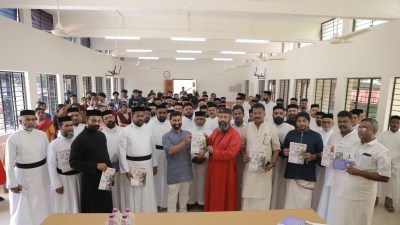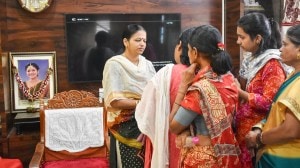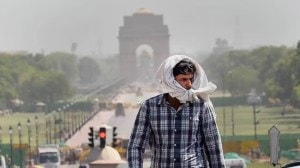- India
- International
‘Fare on Kerala semi high-speed rail will be comparable to third-AC tariff’: KRDCL MD
The ‘Silver Line’ project is conceived as a solution to easing pressure on the existing network as well as on the state’s major highways which are equally dense. The corridor, 532-km long, will be financed at a cost of Rs 56,443 crore.
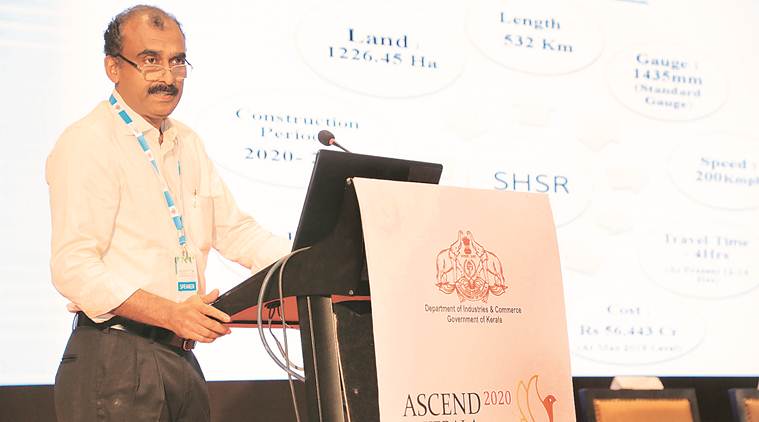 V Ajith Kumar
V Ajith Kumar
Last month, the Ministry of Railways gave in-principle approval for a semi high-speed railway corridor between Thiruvananthapuram and Kasaragod in Kerala that will enable trains to travel at the speed of 200 kmph. Titled ‘Silver Line’, the project, high on the agenda of the ruling Left government, will cut down travel time between the state’s northern and southern ends to just four hours from the existing 12 hours.
The ‘Silver Line’ project is conceived as a solution to easing pressure on the existing network as well as on the state’s major highways which are equally dense. The corridor, 532-km long, will be financed at a cost of Rs 56,443 crore.
The Kerala Rail Development Corporation Limited (K-Rail), a joint vehicle between Railways and the Kerala government to execute projects on a cost-sharing basis, will be the nodal agency for the project. On Thursday, The Indian Express caught up with V Ajith Kumar, managing director, K-Rail, on the sidelines of the ASCEND Summit in Kochi to understand the nitty-gritties of the project. Edited excepts:
The idea for a high-speed rail corridor in Kerala was first mooted by AK Antony when he was chief minister. Why has it taken so long for this project to take off?
The one (mooted by AK Antony) was a high-speed project and a separate company was formed which did not have the backing of the Ministry of Railways. It was only an idea. Because Railways is a central subject, these projects have to be done in consultation with the Centre. We’re (KRDCL) a joint vehicle company between the Ministry and the government of Kerala. It has been formed with the initiative of the Railway Ministry. We have identified a basket of projects, of which the semi high-speed rail project between Thiruvananthapuram and Kasaragod is one of them. This was taken up only in 2018.We conducted feasibility studies and a detailed project report (DPR) is in the final stages of completion.
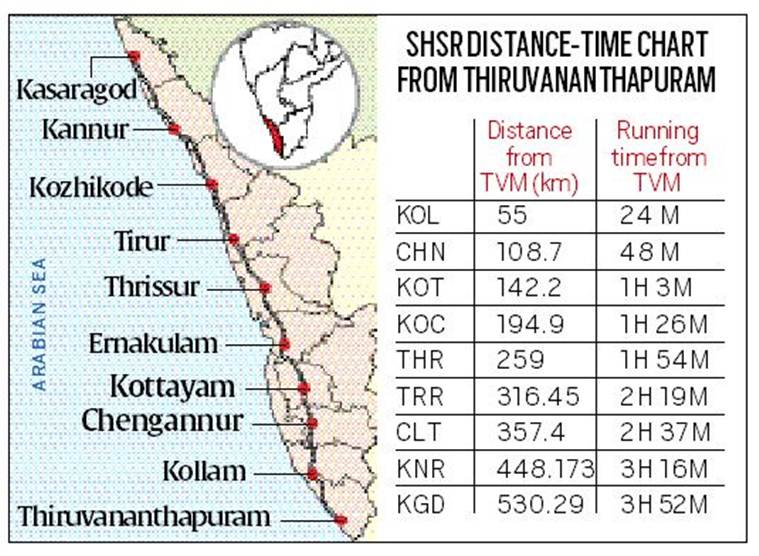

Is this project going to be affordable for the common man in Kerala?
We already have a railway line in the state on which the common man can travel. We’re looking at decongesting roads and how to bring people using their personal cars to this system. We’re looking at a faster mode of transport where the fare will be a little higher because investment is more. We also thought about investing for a high-speed rail project. That option was also there. But there, the investment was almost double and the ticket fare was around Rs 5-6 per km. That was unaffordable even for a person travelling by his own car. In the semi high-speed rail, the technology is conventional and we don’t have to think about importing except the rolling stock. The fares here are going to be Rs 2.75/km, comparable to existing third-AC fare.
How are you looking to fund such a big project?
There are multilateral lending agencies who are willing to fund government projects which are all green. KfW is pushing for green projects. We have already discussed, they are willing and they want our DPR to be in place. We have had 2-3 rounds of discussions with JICA. They’re also keen. We are talking to the World Bank and ADB. So 50 per cent of the funding would be in the form of debt from multilateral lending agencies and the balance as equity from state government, Railways.
We can also have equity from other organisations and the public. For example, there’s a lot of investment from NRIs in projects like Cochin and Kannur international airports. We’re talking to PSUs like IRCON, RVNL and RailTel.
How much of the corridor will be elevated?
Around 40 per cent of the track will be parallel to the existing railway lines and the rest on a new alignment. Around 11 per cent of the track will be elevated at multiple places. We are going for elevated alignment especially at majority of the city centre where the cost of land is very high. Otherwise, in the villages, we will go on the ground to control the costs.
Will you be getting the rolling stock from Indian manufacturers?
No, that’s not possible. Indian rolling stock is currently from ICF (Integral Coach Factory). In India, only those with up to 160 kmph are available. Proven technology for 200 kmph is only available in international market. Also, at 200 kmph, we have to incorporate a lot of safety features into the rolling stock. The equipment are going to be very costly. Rolling stock is the only component which will be imported. Otherwise, everything else is made in India.
Is the KRDCL open to private companies operating semi-high-speed trains?
Yes. In the first set of rolling stock coaches, we have that option, but we have not taken a decision yet. We’re asking experts to deliberate. Delhi Metro had tried it but they found it to be costly. If we’re getting loans at lower interest rates, we will buy the rolling stock and ask someone else to maintain and operate it. But fare structures will be the same.
Can you talk about the train specifics. Number of coaches? Fully electrified route?
The mainline fast trains initially would have around nine coaches with a capacity of 675 people. It will be only sitting. By 2051, we will have 14-car trains. Based on the traffic requirement, we will take the call on the length of the train.
We will also have feeder trains between small stations with 300-pax capacity. Less seats and more space for people to stand. Initially, we will have around 40 trips in a day in each direction. The routes will be fully-electrified. The stations would be powered by solar power.
The air surveys have been completed. What do they say?
We have captured the data, but before we start using it, it has to be vetted by the Ministry of Defence. So the data has been sent to Delhi. They may blank some strategic locations and give us back. It might take about 10 days.
The project is set to be commissioned in 2024. Is that a realistic target?
It’s possible. Right now, we have in-principle approval. Our DPR will be ready in two months. The next 6-12 months will be spent in getting approvals for the DPR from state government, Railways, Niti Aayog, Cabinet Committee on Economic Affairs and finally the Cabinet Committee. By December 2020, the project should get final approval. We’re beginning land acquisition right now. Three years is a good time period for the construction.
Apr 26: Latest News
- 01
- 02
- 03
- 04
- 05











